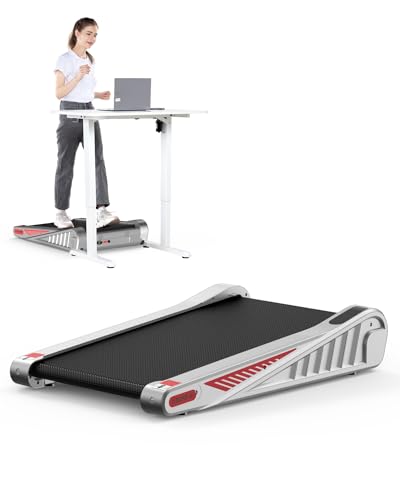20 Things You Should Know About Manual Incline Treadmill
Discovering the Manual Incline Treadmill: A Comprehensive Guide
As the physical fitness market continuously develops, with new devices and devices striking the market, one tool has actually remained a staple in many homes and gyms: the treadmill. Particularly, the manual incline treadmill uses a distinct method to cardiovascular fitness training. This guide delves into the features, benefits, and factors to consider of utilizing a manual incline treadmill.
What is a Manual Incline Treadmill?
A manual incline treadmill is a non-motorized treadmill that needs users to power their movement by walking or working on the belt. Unlike standard treadmills, which count on electrical power to move the belt, manual incline treadmills depend exclusively on the user's energy. simply click the up coming internet page , which can be changed, helps mimic uphill running, providing a reliable workout.
Secret Features of Manual Incline Treadmills
Function
Description
Manual Operation
Users should move the belt themselves, making it a self-paced workout.
Adjustable Incline
Incline settings can be adjusted, providing varied resistance for a tougher challenge.
Compact Design
Typically more light-weight and compact than motorized treadmills, making them simpler to store.
Durable Construction
Typically developed with durable products, created to hold up against rigorous usage.
Digital Display
Some designs may include a basic digital display to show time, range, and calories burned.
Advantages of Using a Manual Incline Treadmill
1. Improved Cardiovascular Fitness
The manual incline treadmill successfully raises heart rate, leading to improved cardiovascular health. The incline setting needs more effort from the muscles, thus increasing the general exercise strength.
2. Customizable Workouts
With manual treadmills, users have full control over their rate and incline. This function enables them to customize exercises to line up with fitness goals, whether focusing on endurance building or interval training.
3. Lower Operating Costs
Manual incline treadmills do not require electricity, making them a cost-effective option to conventional treadmills. This economical element appeals to those seeking to improve their home health club without sustaining high energy bills.
4. Engaging Full-Body Workout
Running or walking on an incline engages several muscle groups, including the legs, glutes, and core. This total-body activation helps tone and enhance the body while burning additional calories.
5. Minimized Risk of Injury
The low-impact nature of a manual incline treadmill can be less taxing on the joints compared to high-impact aerobic workouts. Nevertheless, users ought to still practice good type and start gradually to lower the risk of stress or injuries.
Factors to consider When Using a Manual Incline Treadmill
Safety First
While manual incline treadmills have lots of benefits, there are some safety factors to consider to remember:
- Falling Hazard: Since users move the belt themselves, it is very important to maintain a stable rate to prevent losing balance.
- Incline Levels: Adjusting the incline during use can be difficult and requires mindful attention to keep stability.
Appropriate Form and Technique
To make the most of the benefits while decreasing the risk of injury, users must highlight appropriate running or walking type. This includes keeping the back straight, shoulders relaxed, and arms in a natural position.
How to Choose the Right Manual Incline Treadmill
Selecting the best manual incline treadmill is paramount to achieving physical fitness goals. Below are essential aspects to think about:
Criteria
Recommendations
Weight Capacity
Guarantee the treadmill can support your weight; most have capacities varying from 250 to 400 pounds.
Adjustability
Look for treadmills with multiple incline settings to supply workout variety.
Portability
Consider foldable models if storage space is restricted.
Comfort Features
Look for non-slip surfaces and cushioned running areas to boost convenience.
Frequently Asked Questions (FAQ)
1. How do I keep a manual incline treadmill?
To preserve a manual treadmill, routinely inspect the belt for wear and guarantee it runs smoothly. Tidy the frame and running surface area, and check the bolts and screws for signs of loosening.
2. Is a manual incline treadmill suitable for novices?
Yes, manual incline treadmills can be ideal for novices. Users can begin at a sluggish rate and gradually increase intensity. However, it's essential to understand one's fitness level and begin carefully.
3. Can I perform interval training on a manual incline treadmill?
Absolutely. The adjustable incline function allows users to produce diverse workouts, best for interval training. Alternate in between walking and running at various inclines to keep workouts engaging and challenging.
4. Is a manual incline treadmill quieter than a motorized one?
Yes, due to the absence of a motor, manual incline treadmills typically run more silently, making them an exceptional choice for shared areas.
5. How much area do I require for a manual incline treadmill?
Manual incline treadmills usually inhabit less area than motorized designs. Nevertheless, users ought to ensure there's adequate space for movement around the treadmill for safety.
The manual incline treadmill provides an unique mix of benefits and versatility, making it an excellent option for those aiming to enhance their workout regimen without counting on electrical power. From improved cardiovascular physical fitness to customizable training alternatives, it provides a thorough technique to fitness. By comprehending its features, benefits, and safety factors to consider, users can choose the ideal design and incorporate it effectively into their workout regimen. Whether used in a home gym or a larger physical fitness facility, a manual incline treadmill can be an invaluable tool for those focused on health and fitness.
